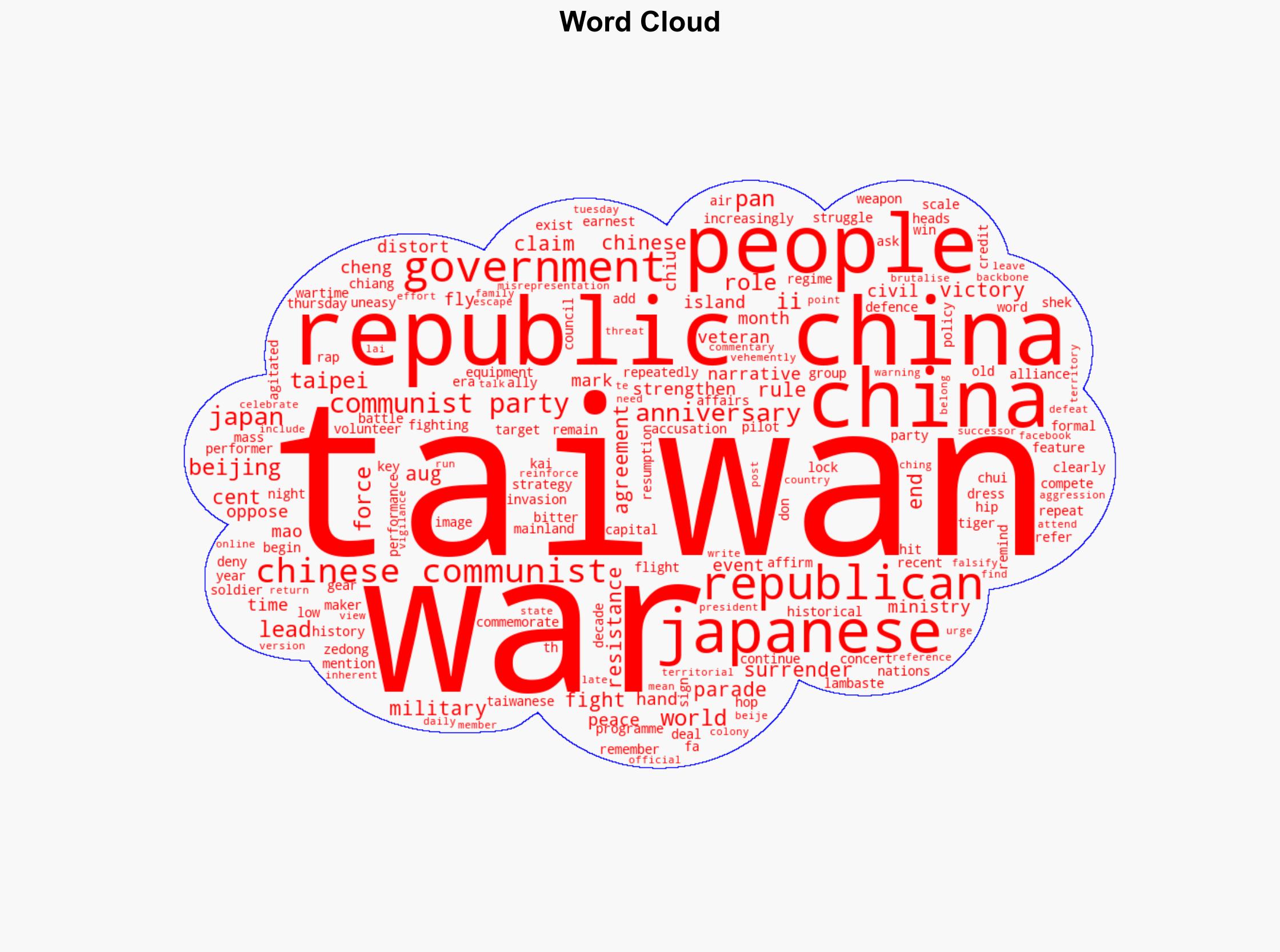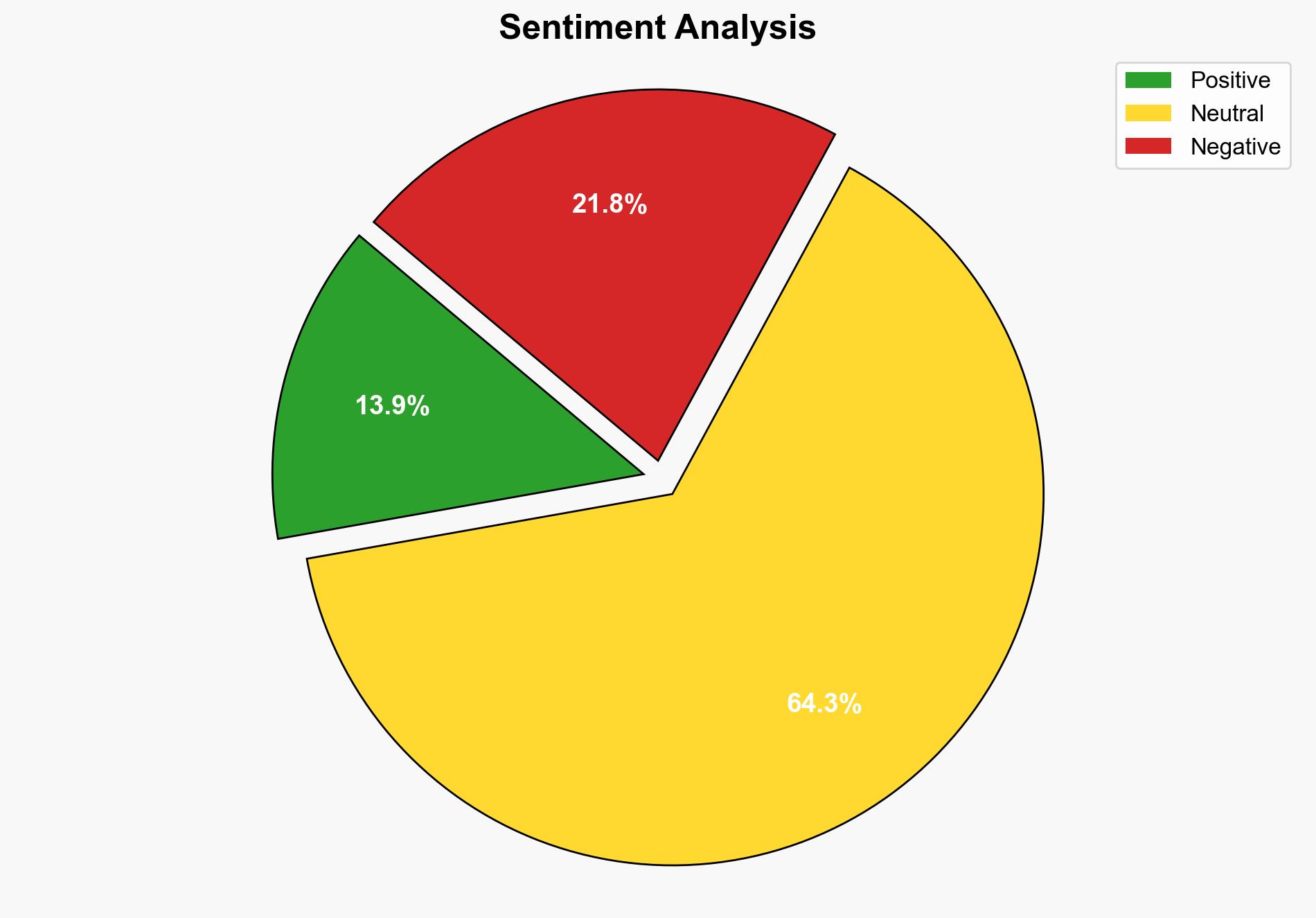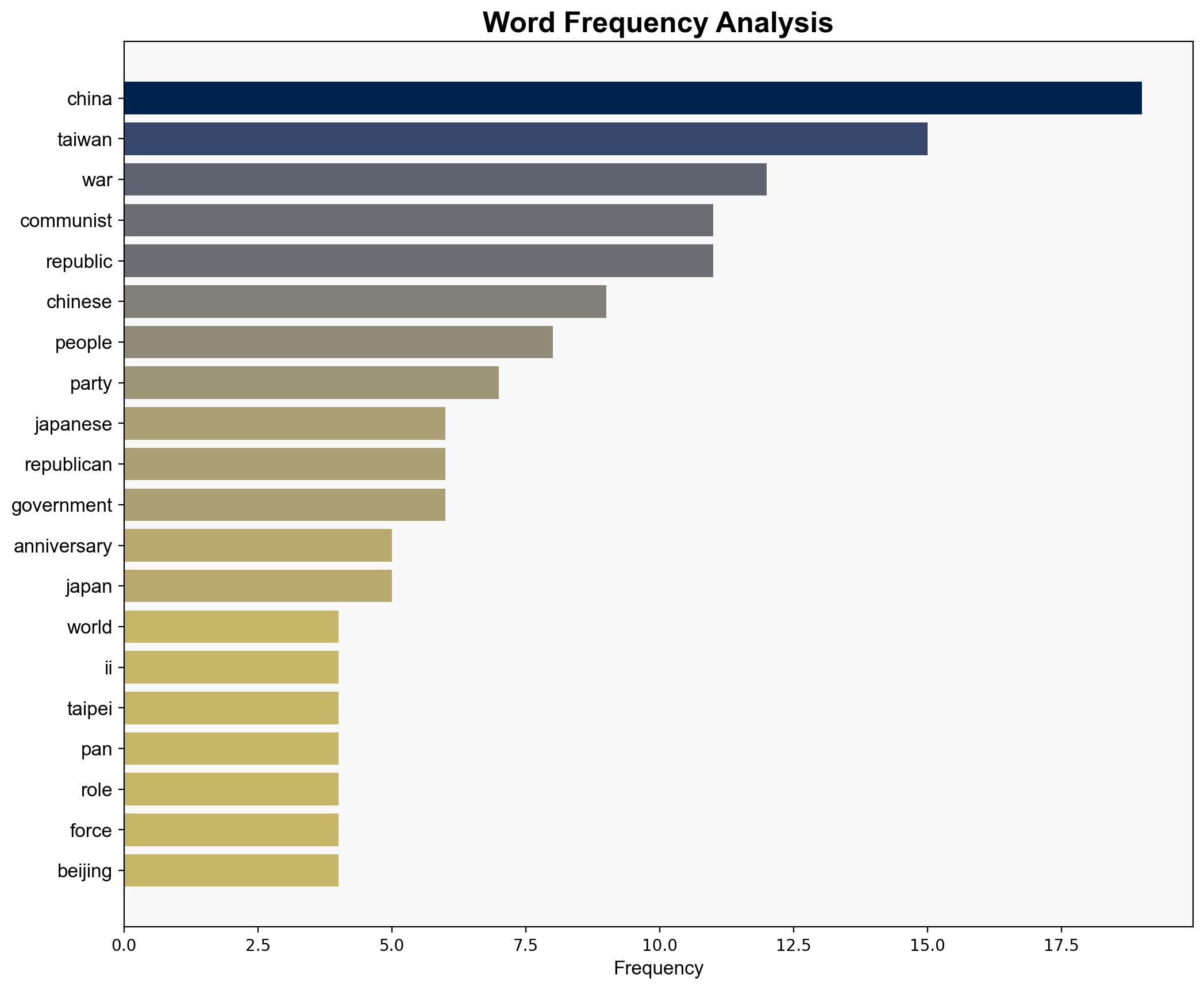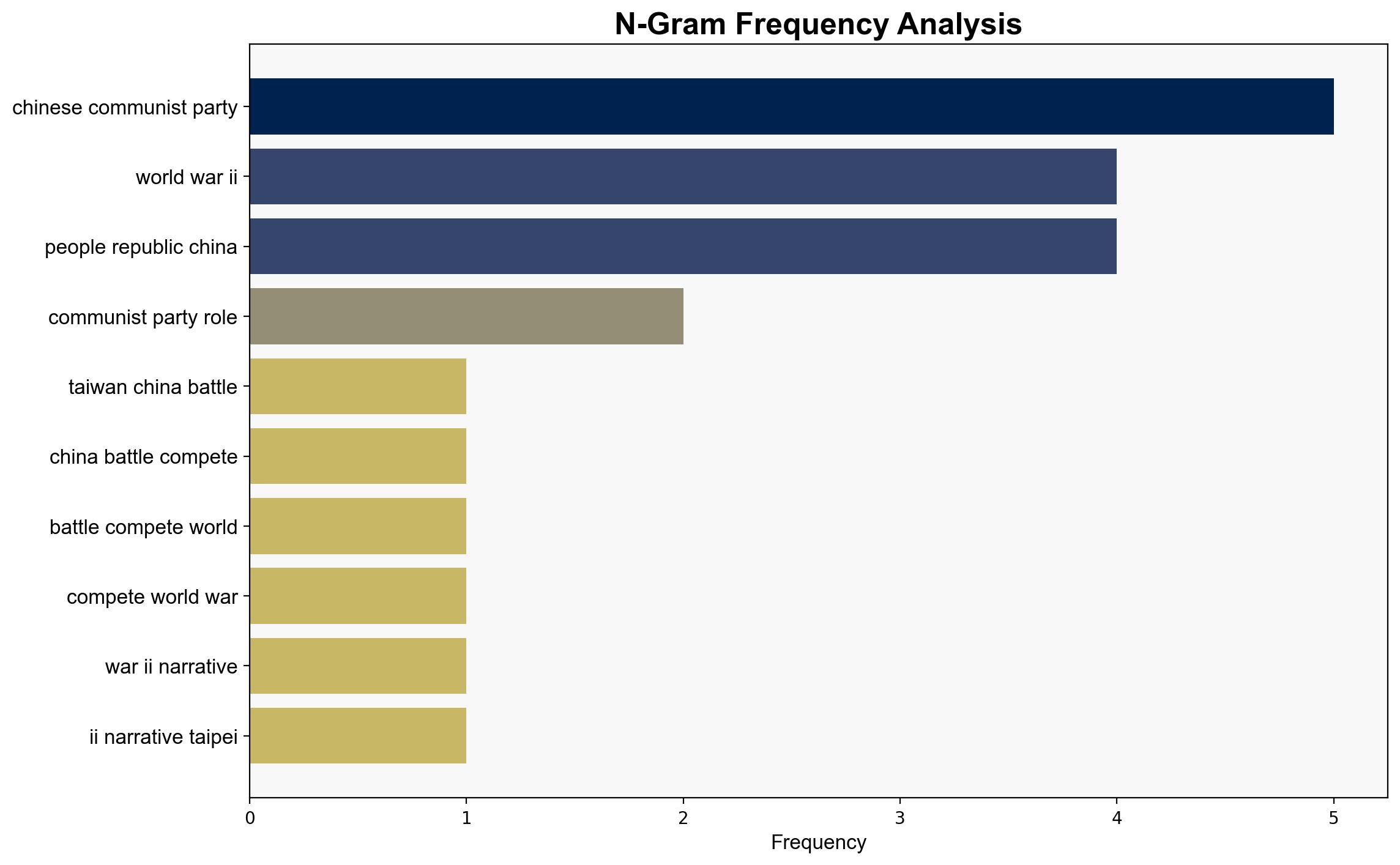Taiwan China battle it out in competing World War II narratives – CNA
Published on: 2025-08-24
Intelligence Report: Taiwan China battle it out in competing World War II narratives – CNA
1. BLUF (Bottom Line Up Front)
The strategic competition between Taiwan and China over World War II narratives reflects broader geopolitical tensions and identity politics. The most supported hypothesis is that both parties are using historical narratives to bolster national identity and political legitimacy. Confidence level: Moderate. Recommended action: Monitor narrative shifts and public sentiment in both regions to anticipate potential escalations in diplomatic tensions.
2. Competing Hypotheses
1. **Hypothesis 1**: Taiwan and China are using World War II narratives primarily to assert political legitimacy and national identity. This hypothesis is supported by Taiwan’s emphasis on the Republic of China’s role in the war and China’s portrayal of the Communist Party as the primary force against Japan.
2. **Hypothesis 2**: The competing narratives are a strategic maneuver by both sides to influence international perception and gain diplomatic leverage. This is suggested by the timing of events and public statements coinciding with significant anniversaries and military displays.
Using ACH 2.0, Hypothesis 1 is better supported due to consistent historical references and domestic-focused rhetoric, whereas Hypothesis 2 lacks direct evidence of international strategy beyond regional influence.
3. Key Assumptions and Red Flags
– **Assumptions**: Both hypotheses assume that historical narratives significantly impact national identity and political legitimacy. It is also assumed that both governments have control over public discourse.
– **Red Flags**: Potential cognitive bias includes confirmation bias in interpreting historical events. Inconsistent data may arise from differing historical accounts and the lack of neutral third-party verification.
4. Implications and Strategic Risks
The narrative battle could exacerbate regional tensions, affecting diplomatic relations and potentially leading to increased military posturing. Economic implications include potential impacts on trade relations if tensions escalate. Cyber and psychological dimensions involve the use of media and online platforms to influence public opinion and international perception.
5. Recommendations and Outlook
- Enhance monitoring of media narratives in both Taiwan and China to detect shifts in public sentiment and government messaging.
- Engage in diplomatic dialogue to address historical grievances and promote mutual understanding.
- Scenario Projections:
- Best Case: Diplomatic engagement leads to a mutual understanding and de-escalation of tensions.
- Worst Case: Escalation of narrative conflict leads to increased military tensions and economic sanctions.
- Most Likely: Continued narrative competition with periodic diplomatic tensions but no significant escalation.
6. Key Individuals and Entities
– Pan Cheng-fa: Veteran emphasizing the Republic of China’s role in WWII.
– Chiu Chui-cheng: Policy maker involved in Taiwan’s narrative strategy.
– Lai Ching-te: Taiwan President highlighting historical narratives in political discourse.
7. Thematic Tags
national security threats, regional focus, historical narratives, geopolitical tensions




